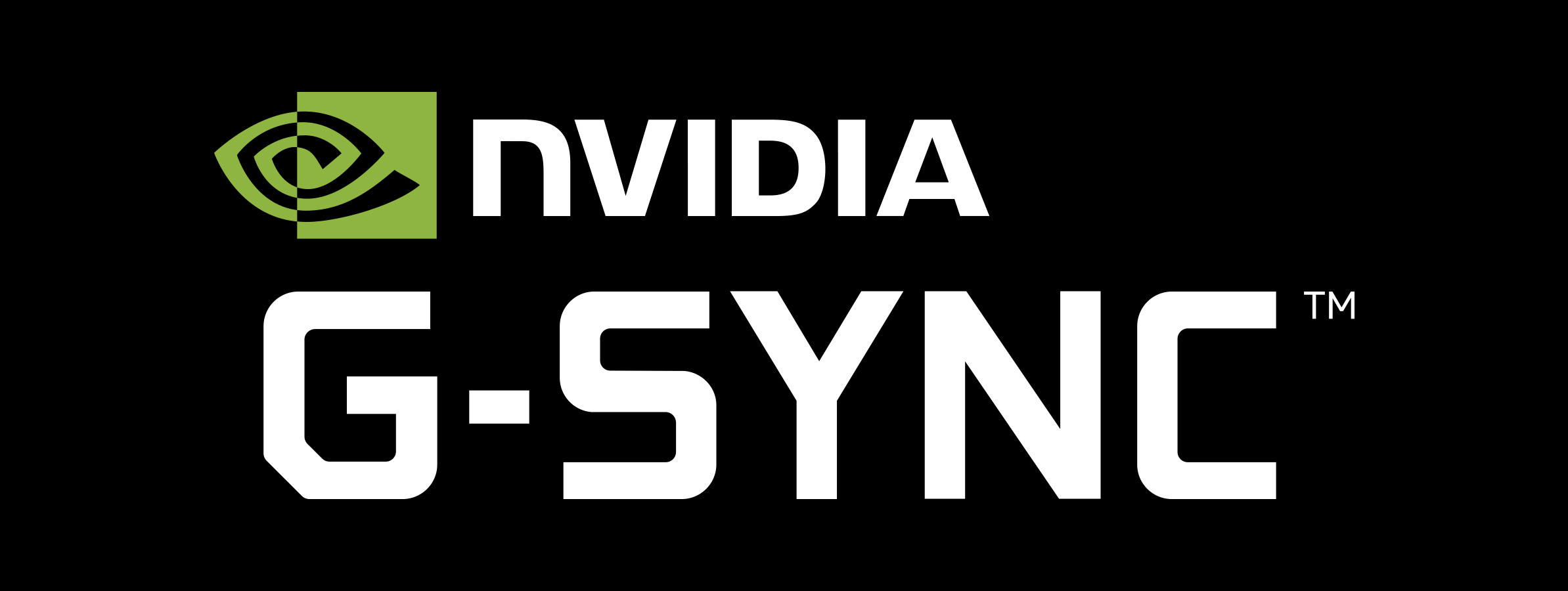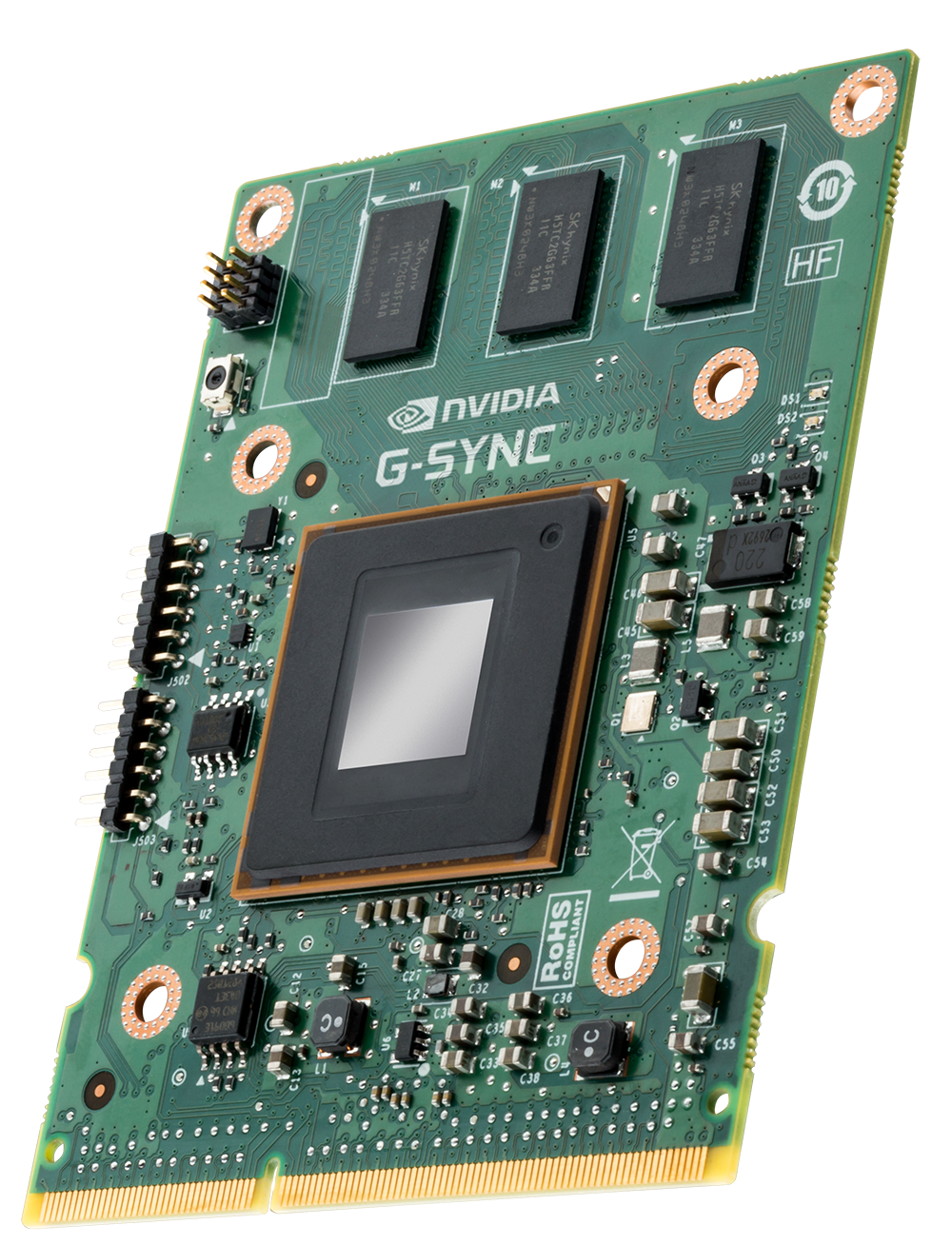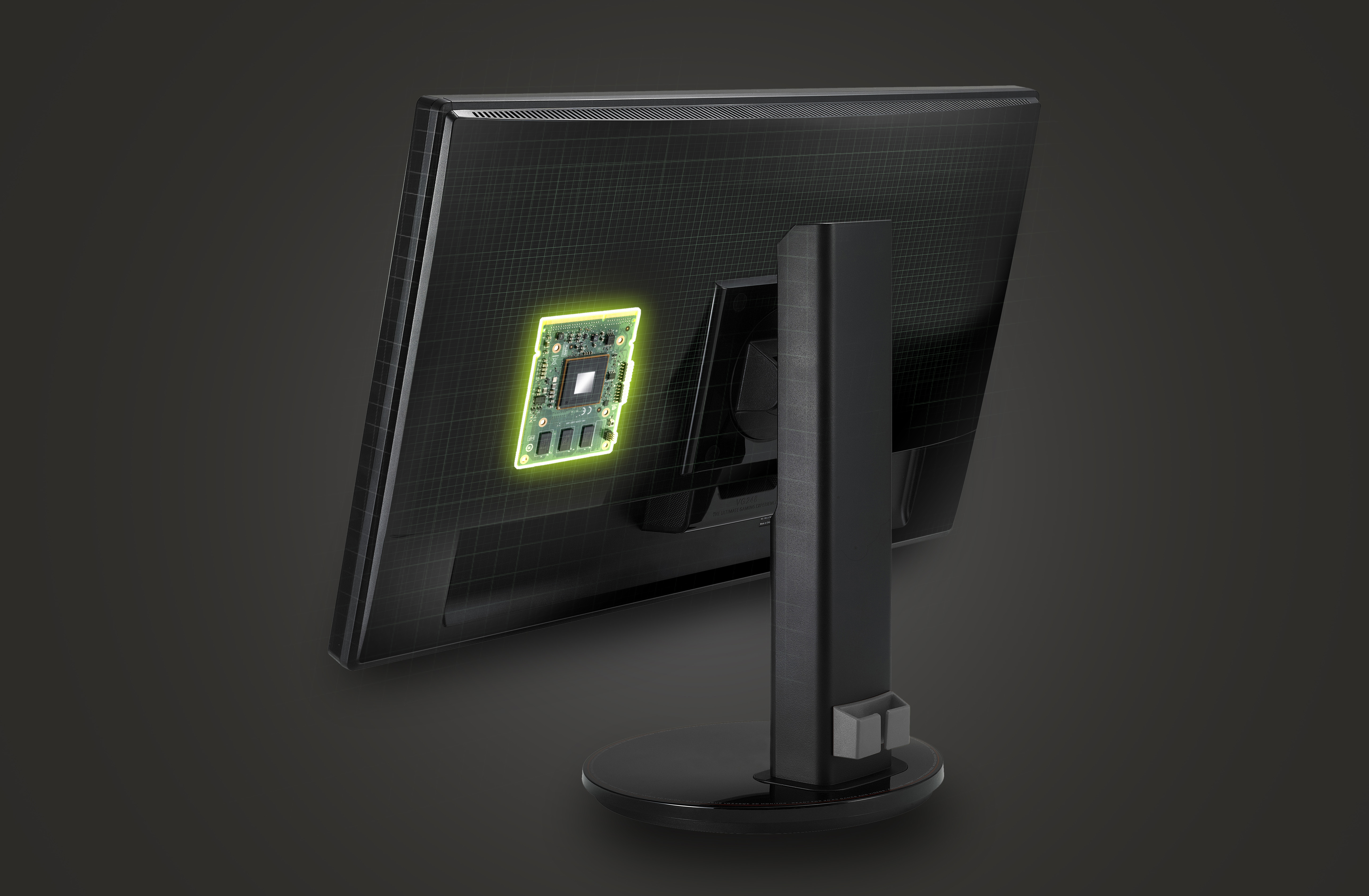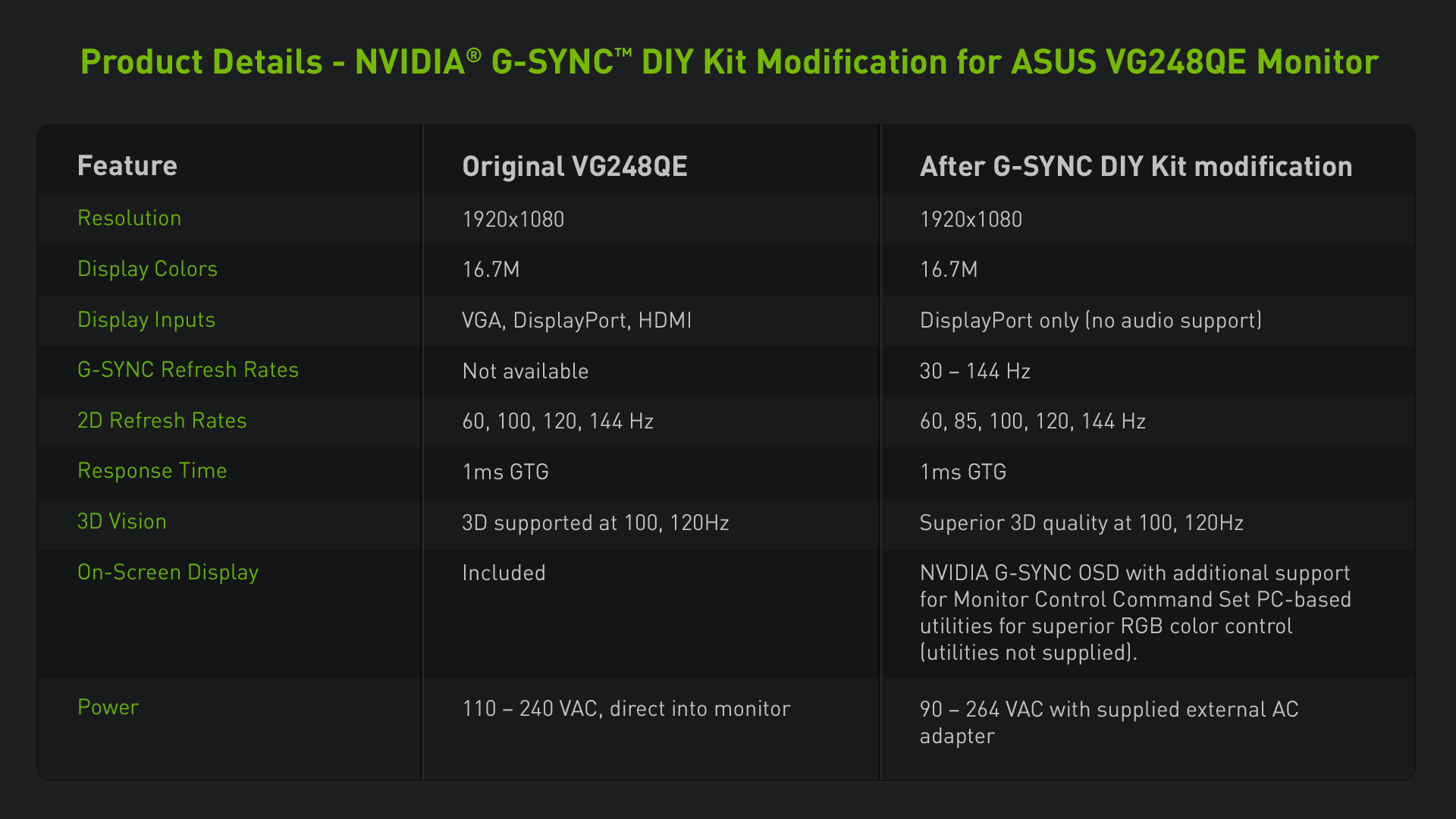Introducing Revolutionary NVIDIA G-SYNC Display Technology: Ultra-Smooth, Stutter-Free Gaming Is Here

NVIDIA is a company founded on innovation, and over the last twenty years, we’ve pioneered and invented hundreds of new technologies that span almost every industry imaginable, from life-saving scientific research, to advanced supercomputing and extreme gaming. Today, we revolutionize display technology with the announcement of NVIDIA® G-SYNC™, a groundbreaking new innovation that casts aside decades-old thinking to create the smoothest, most responsive computer displays ever seen.
With a NVIDIA G-SYNC monitor, screen tearing, input lag, and even most eyestrain-inducing stutter are simply gone. All it takes is a NVIDIA GeForce GTX 650 Ti Boost or better GPU, and a NVIDIA G-SYNC enabled monitor – age old frustrations will be eliminated, and games such as Assassin’s Creed IV Black Flag, Batman: Arkham Origins, Call of Duty: Ghosts, and Watch Dogs will be enhanced with NVIDIA-exclusive features, resulting in the definitive experience.
Industry luminaries John Carmack, Johan Andersson, Tim Sweeney, and Mark Rein have been bowled over by NVIDIA G-SYNC’s game-enhancing technology, and are speaking further about its benefits today at a NVIDIA press event in Montreal. Pro eSports players and pro-gaming leagues are lining up to use NVIDIA G-SYNC, which will expose a player’s true skill, demanding even greater reflexes thanks to the unnoticeable delay between on-screen actions and keyboard commands. In-house, our diehard gamers have been dominating lunchtime LAN matches, surreptitiously using G-SYNC monitors to gain the upper hand. And online, if you have a NVIDIA G-SYNC monitor you’ll have a clear advantage over others, assuming you’re also a LPB.
Starting next year, G-SYNC monitors from leading monitor OEMs will be available on the shelves of your favorite e-tailers and retailers.
The Problem: Old Tech
When TVs were first developed they relied on CRTs which work by scanning a beam of electrons across the surface of a phosphorus tube. This beam causes a pixel on the tube to glow, and when enough pixels are activated quickly enough the CRT can give the impression of full motion video. Believe it or not, these early TVs had 60Hz refresh rates primarily because the United States power grid is based on 60Hz AC power. Matching TV refresh rates to that of the power grid made early electronics easier to build, and reduced power interference on the screen.
By the time PCs came to market in the early 1980s, CRT TV technology was well established and was the easiest and most cost effective technology for utilize for the creation of dedicated computer monitors. 60Hz and fixed refresh rates became standard, and system builders learned how to make the most of a less than perfect situation. Over the past three decades, even as display technology has evolved from CRTs to LCD and LEDs, no major company has challenged this thinking, and so syncing GPUs to monitor refresh rates remains the standard practice across the industry to this day.
Problematically, graphics cards don’t render at fixed speeds. In fact, their frame rates will vary dramatically even within a single scene of a single game, based on the instantaneous load that the GPU sees. So with a fixed refresh rate, how do you get the GPU images to the screen? The first way is to simply ignore the refresh rate of the monitor altogether, and update the image being scanned to the display in mid cycle. This we call ‘VSync Off Mode’ and it is the default way most gamers play. The downside is that when a single refresh cycle show 2 images, a very obvious “tear line” is evident at the break, commonly referred to as screen tearing. The established solution to screen tearing is to turn VSync on, to force the GPU to delay screen updates until the monitor cycles to the start of a new refresh cycle. This causes stutter whenever the GPU frame rate is below the display refresh rate. And it also increases latency, which introduces input lag, the visible delay between a button being pressed and the result occurring on-screen.
Worse still, many players suffer eyestrain when exposed to persistent VSync stuttering, and others develop headaches and migraines, which drove us to develop Adaptive VSync, an effective, critically-acclaimed solution. Despite this development, VSync’s input lag issues persist to this day, something that’s unacceptable for many enthusiasts, and an absolute no-go for eSports pro-gamers who custom-pick their GPUs, monitors, keyboards, and mice to minimize the life-and-death delay between action and reaction.
The Solution: NVIDIA G-SYNC
Description

Enter NVIDIA G-SYNC, which eliminates screen tearing, VSync input lag, and stutter. To achieve this feat, we build a G-SYNC module into monitors, allowing G-SYNC to synchronize the monitor to the output of the GPU, instead of the GPU to the monitor, resulting in a tear-free, faster, smoother experience that redefines gaming.
NVIDIA G-SYNC is so smooth and so fast, that testers have found themselves overshooting and missing targets because of the input and display lag that they have subconsciously accounted for during their many years of gaming. In addition to pro-gaming testers, we demonstrated G-SYNC to industry luminaries like John Carmack, Johan Andersson, Tim Sweeney, and Mark Rein. Mark, co-founder of Epic Games, was so enthused he couldn’t resist a teaser, telling his followers that he “saw the most amazing thing made by @nvidia. No, it's not a GPU, but gamers will love it.”
Tim Sweeney, creator of Epic’s industry-dominating Unreal Engine, called G-SYNC “the biggest leap forward in gaming monitors since we went from standard definition to high-def.” He added, “If you care about gaming, G-SYNC is going to make a huge difference in the experience.” The legendary John Carmack, architect of id Software’s engine, was similarly excited, saying “Once you play on a G-SYNC capable monitor, you’ll never go back.” Coming from a pioneer of the gaming industry, who’s also a bonafide rocket scientist, that’s high praise indeed.
Tim and John are established game-engine gurus; fast approaching that status is Johan Andersson, DICE’s technical director, and architect of the Frostbite engines that power several EA titles. As a man known for pushing the boundaries of technology, we were keen to shown Johan G-SYNC.
Following the G-SYNC demo, Johan simply said, “Our games have never looked or played better,” adding, “G-SYNC just blew me away!”
See what else Tim, John and Johan had to say about G-SYNC’s features and benefits in the video below.
How To Upgrade To G-SYNC
If you’re as excited by NVIDIA G-SYNC as we are and want to get your own G-SYNC monitor, here’s how. Early next year, G-SYNC monitors from ASUS, BenQ, Phillips and ViewSonic will be available direct from the shelves of retailers and e-tailers. If you can't wait, G-SYNC modules will be winging their way to professional modders who will install them into ASUS VG248QE monitors, rated by press and gamers as one of the best gaming panels available.
Conclusion: A Groundbreaking Revolution Has Arrived
In this time of technological marvels, there are few advances one can truly call “innovative”, or “revolutionary”. NVIDIA G-SYNC, however, is one of the few, revolutionizing outmoded monitor technology with a truly innovative, groundbreaking advancement that has never before been attempted.
G-SYNC’s elimination of input lag, tearing, and stutter delivers a stunning visual experience on any G-SYNC-enhanced monitor; one so stunning that you’ll never want to use a ‘normal’ monitor ever again. In addition to cutting-edge changes to the viewing experience, multiplayer gamers will receive a significant competitive advantage when G-SYNC is paired with a fast GeForce GTX GPU, and low-lag input devices, something that’ll surely pique the interest of shooter aficionados. For eSports players, NVIDIA G-SYNC is an essential upgrade. With G-SYNC’s removal of input lag, successes and failures are squarely in the hands of players, differentiating the pros from the amateurs.
When the biggest names in the business are blown away, and the architect of Unreal Engine calls G-SYNC “the biggest leap forward in gaming monitors since we went from standard definition to high-def”, you know that G-SYNC will raise the bar for display technology. Somehow, if that testimony isn’t proof enough, keep your eyes peeled on your favorite hardware sites for hands-on impressions of NVIDIA G-SYNC monitors, which are currently being shown at a press event in Montreal.
For all the latest on G-SYNC’s release stay tuned to GeForce.com, and for news of North American G-SYNC demonstrations stay locked to the NVIDIA GeForce Facebook page.

